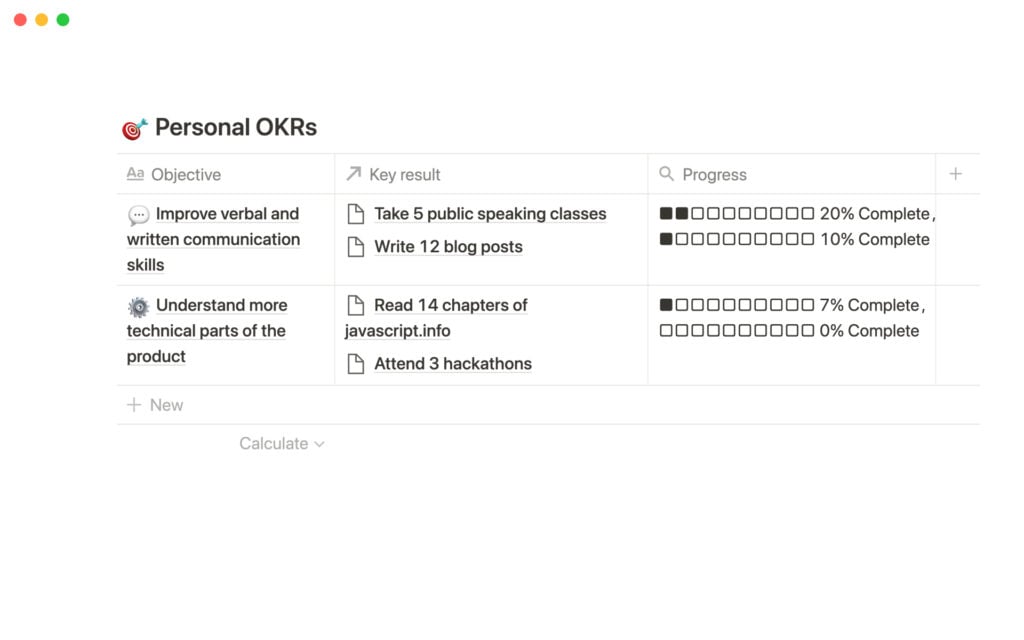Updated: September 9, 2025- 16 min read
Hey there! We’re spending the month of December looking back at what went on in 2021. Keep an eye out for deep-dives and celebrations right here on our blog and on social media.

We’re ramping up to end another year, and it’s sometimes easy to forget that another year for your product is another year for you in your career. More achievements under your belt, more mistakes learned from, and more growth in your role.
To grow in your career you should always treat yourself like a product too, and that means being able to be introspective and think about your performance in the last 12 months. Because understanding where you’ve come from is the best way to understand where you’re going next.
As a Product Manager, you should be more than familiar with retrospectives. But have you ever thought about running one on yourself? Whether you’re an established Product Manager or breaking into Product, a retrospective can help you identify areas to improve as a Product Leader and person.
If you’re ready to get started, scroll to the bottom of this article to find templates for 1) running a professional and personal retrospective for 2021 and 2) setting resolutions for 2022. For more details on conducting your retrospective, read on.
How to Conduct a Self-Retrospective
Set your intention

It should come as no surprise that you have to start with the why. There’s no point in running a personal retrospective just because we’ve told you to! Give yourself focus by deciding what you hope to achieve with a retrospective. What do you want to know about yourself? How will that help you improve next year?
It’s worth it to ask yourself these questions in both the professional and personal sense. After all, as much as we might wish otherwise, the personal affects the professional. So to be the best Product Leader you can be, it helps to work on becoming the best person you can be as well.
Ask yourself questions
Think about the year from a big picture perspective. Were there any major internal or external events that rocked your world? What were your biggest accomplishments and failures?
Check out this template to see how you can break down this bird’s eye view of the year. Add or delete questions as you see fit, in accordance with 1) your intention and 2) how in-depth you want the retrospective to be.

Once you’ve answered the big picture questions, get more specific. And don’t just focus on the hard numbers! If you ask yourself “How many books did I read this year?” also ask “What impact did they have/what did I learn from them?”
Here are some examples to show you what we mean…
How many events did I go to this year?
Who did I meet?
What did I learn?
Can I go to more/should I go to fewer in 2022?
What new skills did I gain this year?
How did I demonstrate them?
What projects am I the most proud of?
What impact did they have?
Will I do them again this year?
You can follow these exact questions if you’d like, but try coming up with some of your own as well! It’s common to measure things like number of books read or hours spent in the gym, because these are things we think we’re supposed to aim for. But we suggest identifying what goals are actually in alignment with the kind of person and professional you want to be instead of automatically going with the default.
Get data-driven
Data is the lifeblood of all things in Product, and the same goes for Product Managers. If you’re a data-driven Product Manager (as you should be!) then you should love the idea of getting the cold hard numbers of the year you’ve had.

As people, we experience time through our perceptions and emotions, and getting the stats can give you a fresh perspective. Perhaps you’ve been hard on yourself for having an unproductive job hunt, and seeing the number of applications you sent out and mock interviews you attended can give you pause to re-think your efforts. Or perhaps you don’t feel like you’ve been the best team leader this year. Take a look at what your team has achieved, in numbers, and start tallying up the wins.
If you’re not sure what numbers to look for, here are some ideas to get you started…
For professionals:
Projects completed
Plus insights on the pros/cons of development and launch/adoption metrics
Skills
Courses taken
Positive feedback from peers/supervisors
Wins
Aligned stakeholders to Product Vision
Improved team communication processes
For job seekers:
Networking events attended
Applications sent
Positive responses received
Launched a side hustle product
For your personal life:
Books read
Miles run
New places visited
Classes/courses taken
There are plenty of ways to track this information. It can be as simple as a Google Sheet where you list out your answers, or a Coda if you prefer a visual representation.
Ask for input
No retrospectives are run in isolation. In normal retrospective meetings, everyone who touched the project looks back at the processes that made it happen. While there’s no need to pull everyone in front of a whiteboard for your personal retrospective, you can absolutely spice it up with some input from the people around you.

If performance reviews aren’t already part of the makeup of your team, ask your boss for one—even if you’re not currently in a Product Manager role. If there are specific PM skills you’ve been working on developing, you can ask for focused feedback on these.
You can also look at any recommendations you’ve received on LinkedIn, or shout-outs you’ve received at work. If you already have a habit of collecting feedback throughout the year, a retrospective is a great way to gather all of that information so you can synthesize it all in one place. See if there are any words that come up repeatedly when people talk about you, and identify patterns, improvements, and opportunities for growth.
Assess your failures
Learning from failure is one of the most valuable ways to grow, and is a tried and tested method in the tech industry! By learning what went wrong along the way, you can actively avoid making the same mistakes again:
Step 1: Identify the mistake or missed opportunity
Step 2: Uncover the reason why
Step 3: Make a plan to avoid the same mistake in future
Start by identifying the mistakes you’ve made in the last year, or any opportunities you missed that keep you up at night. Think about things you wish you’d done differently. Maybe there was a question that you bombed in an interview, or a mistake you made at work that had collateral damage. Or maybe you were offered a job that you didn’t take, and now the company is a unicorn!

Once you’ve identified a mistake, look back to understand the reason why you made that mistake. Perhaps you bombed the interview question because you failed to properly research the company. Maybe you didn’t take that job because you felt too much impostor syndrome.
Armed with this information, make a plan to avoid making the same mistake again. For example, come up with a checklist of things to do before an interview. Impostor syndrome is more difficult to overcome, so write a letter of encouragement to your future self, including how it made you feel to miss out on that opportunity because of it. Or else, break down what skills you felt were lacking at the time, and build those up. These steps may give you the confidence boost you need to take the leap next time.
Measure your successes
It’s very easy in Product Management to get lost in the weeds of your job and forget about all of your small personal wins along the way. It’s just as important to focus on what went right as what went wrong.
Start by thinking about the biggest milestones that your product had this year, and figure out what your individual contributions were that directly caused that impact. Were you the one who conducted the user interviews that led to a breakthrough new feature? Did the person you hired as an intern get their first Product Manager role?

And don’t just focus on work. Think about the successes you’ve had in all aspects of your life. Anything from running your first 5k to giving birth! If your year was full of challenges and you made it through, that’s enough of an accomplishment in itself. Reminding yourself of your personal accomplishments and successes helps to give you more confidence, which is a vital attribute for Product Leadership. If you buy into your own story and feel proud of who you are, it makes it easy for other people to do the same.
It’s not just a confidence boost to have these stats to hand. It’s useful to know how great you are off the top of your head for things like networking and interviews. Not that you should walk around spouting off awesome facts about yourself to anyone who will listen, but knowing where you stand and what you’ve accomplished can be a valuable tool in demonstrating your career growth and what you can offer.
What to Do With Your Findings
So you’ve gathered all the data about the year you’ve had. Now what should you do with them? You can use them to set realistic goals and data-driven expectations for yourself in 2022!
Atlassian defines retrospectives as reflecting on the past to improve the future; the best thing you can do with your new self-knowledge is to use it as a tool to keep working towards the kinds of person and professional you want to be.
Your retrospective also helps you be realistic moving forward; there’s little more disheartening than setting goals that you won’t reach. If you know that you only managed to read 4 books in 2021, deciding to read 100 in 2022 might be setting yourself up for disappointment.

It’s okay to have big ambitions in the longterm, but level-setting expectations for what you can do now and working towards where you ultimately want to be is more effective than setting overly ambitious goals and setting yourself up for failure.
Taking the book example: if your longterm goal is to be able to read 100 books a year but now you can only read 4, your reading goals for 2022 might be as follows:
Create a reading habit (e.g. read before bed or during your commute)
Increase reading speed
Read 10 books in 2022
Now you can get started on setting goals for 2022. There are lots of goal-setting frameworks, so if you already have one that your prefer, go ahead and use that ( your retrospective findings in mind, of course!). But if you’re still shopping around for a framework, try ours on for size.
Setting Resolutions for 2022
It’s notoriously hard to keep New Year’s resolutions. This is because any kind of behavior change is tricky to pull off, especially over the long term. The mistake many people make is trying to change too much, too quickly, and getting discouraged. Therefore, it’s important to think about resolutions and goals in terms of direction, not destination.

This means that the first step to setting goals and resolutions is figuring out what kind of person and professional you want to be and, as best as you can, taking actions that reflect that ideal version of yourself. Having that big picture in mind will help you keep moving in the correct direction even if you fall short of a destination (like a goal or resolution). Setting goals and resolutions is great! But what’s more important is sustained effort over time, even when you do fall short of your goals.
Define your values
Let’s take a step waaaaay back. To decide what direction you want to go in, you first have to think about what kind of person you want to be.
We and many Product Managers who pass through Product School talk about treating yourself like a product. It may sound cheesy, but everyone says it because there’s a grain of wisdom there. Although we might think that XYZ achievement will make us happy, a growing body of psychology research shows that happiness is in fact the result of engaged and purposeful living.
People intuitively understand this, and this is part of the reason behind the mass exodus in the workforce in 2021, otherwise known as The Great Resignation. With everything changing around them, and more time to think about their life direction, people started to think…is this really what I want to be doing with my life? And that’s a worthwhile question to ask not only during big paradigm-shifting events like global pandemics, but also throughout your lifetime.

We know all about a product’s North Star. What’s yours? At your retirement party, what do you want people to say about the kind of professional you were? What do you want to accomplish? At your funeral, what will be in your eulogy?
This is why we so strongly advise aspiring Product Managers to find problems they’re passionate about solving. Your career is a huge part of your life, and Product Managers are lucky to be able to work in a huge variety of industries. Find the one that matters to you.
Fire hose: list EVERYTHING
Pretend you have infinite time, endless motivation, and zero roadblocks. Now do a braindump of everything you want to accomplish or learn. Don’t be shy! There are many cool and interesting things to learn about and be. Maybe you want to learn more about AI, and crypto, and data science, and customer research, and coding, AND leadership. Maybe you want to grow an incredible garden, or become vegan, or learn to ski. List it all.

And now list things you definitely don’t want to do. Maybe you think to yourself “Wow, am I not at all interested in e-commerce,” or “gaming seems like a cool industry, but that’s not my cup of tea.”
Put everything out in the open, and see all the different energizing ways you can spend your time.
Drip irrigation: prioritize and focus
But sadly, we don’t have unlimited time or energy. You’ve listed out all the ways you’d like to spend your time, and now we’ll narrow the list down to identify just a few goals and habits to tend to and grow. Prioritize what’s most important or urgent. There are lots of prioritization frameworks, so choose one and apply it.

You might notice there are a lot of things on your firehose list that don’t make the cut. Part of pursuing goals is understanding the sacrifices you have to make to accomplish them, and sometimes by pursuing one version of ourselves, we sacrifice another. Maybe the trade-off is being a specialist instead of a generalist, or focusing on being a present parent instead of accepting a promotion that would require a lot of travel.
But the great part is: it’s up to you to decide where you want to focus your efforts. If you’re having trouble prioritizing, look back at the values you identified for yourself. Ask yourself which goal most fits with the kind of person you want to be.
Create a structure
You’re almost done! The last step here is creating a plan to follow through on your resolutions. How do you want to implement these goals? How will you measure progress?
It can help to break your broader goals down into smaller behaviors. Let’s use smoking as an easy example. You can break quitting smoking into:
When I feel the craving to smoke, I’ll drink a glass of water instead.
If I do smoke, I’ll record my emotional state before and after and remind myself of the reasons I’d like to stop.
If someone in a social setting asks me if I’d like a cigarette, I’ll say “No thank you, I don’t smoke.”
This not only makes it easier to measure your goals, but gives you a blueprint for what to do when you feel yourself start to slip in your progress.

More complex goals also have more complex structures, so start with simple behaviors. Say, if your goal is to show your partner care, your small behaviors can be:
Bring my partner a cup of coffee in the morning
Talk with my partner about our days after work
Soft skills are especially valuable for Product Managers, but are also the hardest to track. If you’re focusing on improving a soft skill like communication, teamwork, or leadership, get really specific. What does a successful outcome look like? Maybe it’s taking into account your teammates’ emotional state when giving feedback, or tracking how often your teammates come to you for support/advice. Though tracking soft skills isn’t an exact science, it can have a huge impact on the kind of professional and person you are.
When you decide which goals you want to focus on, you can set up a tracking sheet or journal to see your progress. You can also make your tracking easier with tools that are already built for this purpose—if you want information on the books you’re reading, GoodReads and Audible are designed to help with this. If you’re trying to improve your time management, your digital products already have screen time trackers designed into them. And if you’re focusing on fitness, there’s a wide variety of smartwatches and apps to give you data on your exercise and health. If you don’t want to measure your behavior that closely, set an intention and reflect regularly on whether you’re still following it. Find whatever works for you!
Need clarification on goal-setting terminology? Read The Difference: OKRs vs KPIs

Finally, plan check-ins throughout the year to reevaluate and realign with your goals. Maybe halfway through the year you’ll realize you’re not actually as passionate about your stated goal as you thought, or maybe a life event happens that causes you to shift your priorities. If you find you’re consistently following short of your goals, scale down. Start with smaller goals that you can consistently meet, and work your way up. Remember—the direction is more important than the direction.
Good luck! Use these templates from us and our partners to conduct your 2021 retrospective and plan for 2022.
Where to Find the Templates
In G Suite
Go to 2021 Retrospective Overview
Go to 2021 Retrospective Tracker
Go to 2022 Resolutions Tracker
On Notion

On Coda

Interested in more templates for Product Managers? Check out our template collection!

Updated: September 9, 2025





